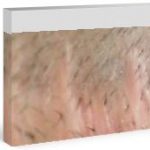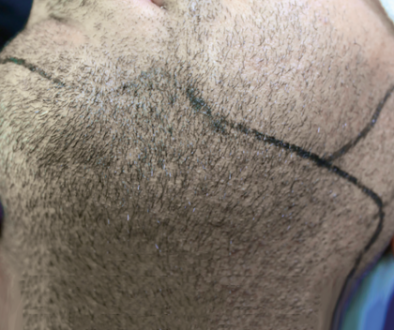Hair Transplant Strip Scars and How to Revise Them
The following response to a question from the Hair Restoration Social Community and Discussion Forums, was written by forum member “MrGio”, Online Representative for Coalition Hair Transplant Surgeon Dr. Patrick Mwamba:
 Far too many hair transplant patients come to us after being told that they will have a pencil-thin strip scar, if they were told of any chances of linear scarring at all. Many times a scar from follicular unit strip surgery (FUSS) will stretch over time and the patient can never wear their hair shaved short on the back and sides. Sometimes the orientation of the hair in the donor zone can be skewed because the hair above and below the scar can be misangled. This isn’t fair to the patient because they should be given full disclosure of all possible after effects of strip surgery.
Far too many hair transplant patients come to us after being told that they will have a pencil-thin strip scar, if they were told of any chances of linear scarring at all. Many times a scar from follicular unit strip surgery (FUSS) will stretch over time and the patient can never wear their hair shaved short on the back and sides. Sometimes the orientation of the hair in the donor zone can be skewed because the hair above and below the scar can be misangled. This isn’t fair to the patient because they should be given full disclosure of all possible after effects of strip surgery.
Based their specific goals, some patients come to our hair restoration clinic to revise their strip scars and some come to us for treating complications with their strip scars. Even with performing trichophytic closure, we still effectively prefer follicular unit extraction (FUE) method over FUSS (strip).
To treat strip scars, we usually can achieve significant improvement with two small sessions of grafting by FIT. The approach to add lower density over more than one session has allowed us to conclude that the transplanted grafts have a much higher survival rate and better blood supply. Strip scars can usually be treated after six months.
The above image is a view of a strip scar in the donor region that displays hair growing in opposite directions.
Mr. Gio
—-
David
Editorial Assistant and Forum Co-Moderator for the Hair Transplant Network, the Coalition Hair Loss Learning Center, and the Hair Loss Q & A Blog.
To share ideas with other hair loss sufferers visit the hair loss forum and social community.
Technorati Tags: hair transplant, follicular unit strip surgery, FUSS, hair restoration, trichophytic closure, follicular unit extraction, FUE



